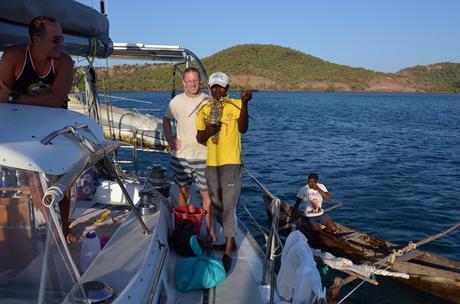
Food is so much more than sustenance, and experiencing a country and culture through food is one of the things I most look forward to in a new place. It gives me pieces of a place to take with us (I think there’s at least one dish or condiment we’ve added to the Totem repertoire from every country, and often several), and an excuse to explore and try something new.
In Madagascar’s touristy destination, Nosy Be, we’ve been treated to some of the best dining experiences in a long time. Dinner off the boat, if available and in our budget, it usually limited to street food – but here, eating out is an affordable treat. Ample pizzas for $4-5 in a cafe; at a more upscale French restaurant, the juicy, tender, foie-gras topped filet I ordered was about $8 and enough for two meals. I think Mairen’s flambeed desert might have been a couple of bucks.
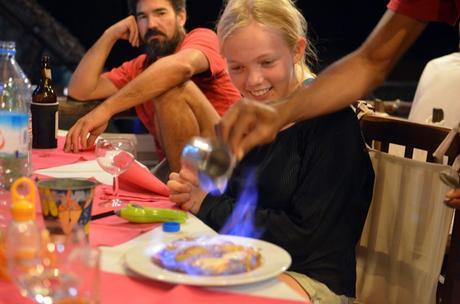
There’s good street food, too. Fatty little kebabs are grilled on demand over a charcoal fire in small stalls. There’s a vendor on the rutted dirt road between the town of Dar Es Salam and the bay where Totem is anchored where I pick up a couple, each about two bites worth of juicy meat, served with a spicy/tart salad of shaved green mangoes. Delicious!
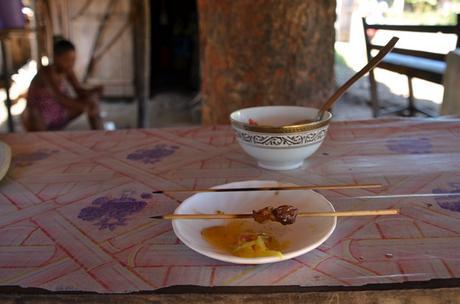
A little farther down the track is a shop with a wooden bench from a single plank about 6” deep. The proprietor, Lydia, sells a hot drink made from a purply-green nutlike bean that I try out of pure curiosity. It turns out to be the kola nut, one of the key ingredients of the original Coca-cola. Some of her customers are buying just a bean to chew on: an energy boost for those who can’t afford a meal, it offers a significant stimulant punch to keep working. I drink it in a hot brew made with the addition of ginger, sugar, and milk; one shot-sized glass is plenty!
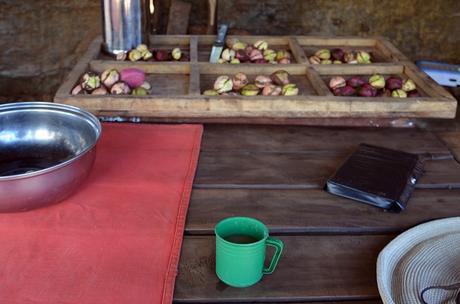
The beautiful beef we’re eating in fancy thick-cut steaks or streetside brochettes is actually from zebu, the humped Brahaman cows that are as much a part of Madagascar culture as gastronomy. Zebu are a status symbol, a sign of wealth, a sacrificial animal essential for ancestor worship rites, a tool to earn a living. They are everywhere here: trotting alongside cars the road with their carts, chewing their cut while waiting for the next load, or just posing in a field.
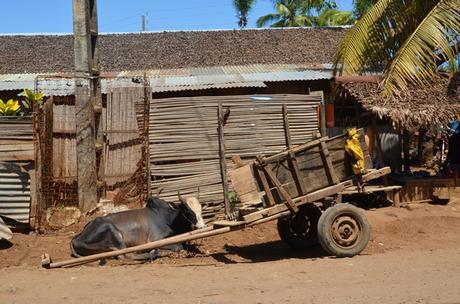
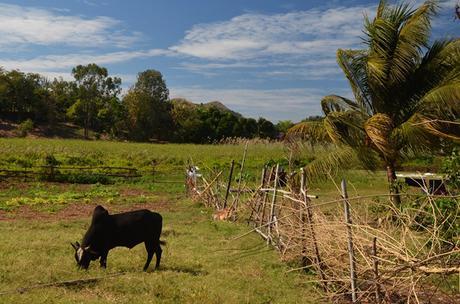
Strings of zebu meat are sold in the market and just on the street by men (it’s always men) who carry the strips of raw meat on strings that hang from a pole across their shoulders.
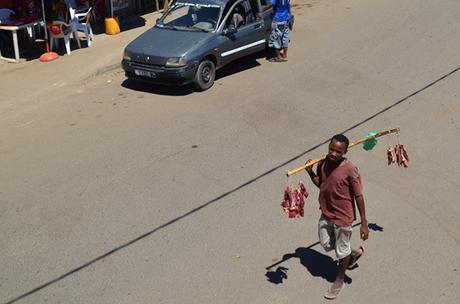
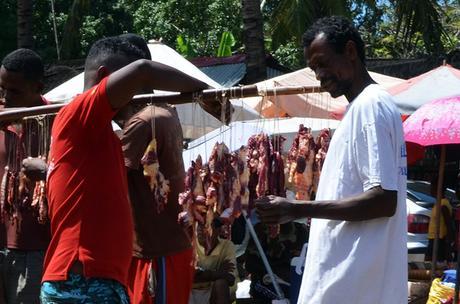
I’m usually not too squeamish about buying public market meat, but there are just a lot of flies and dirt, so have stuck to grocery store refrigerated cases.
Vegetables, on the other hand, are the domain of women- only a couple of the dozens of public market vendors are men. Their wares are fresh, and chaotic, and will almost certainly be measured out in an old condensed-milk can.
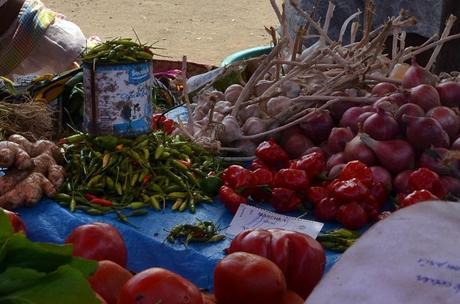
And then there are the stalls run by children, with children for their clientele.
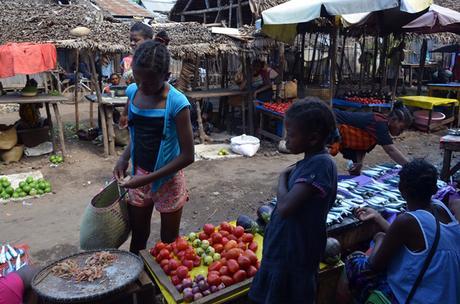
The colonial French years left a mark: baguettes are plentiful, and like just about everything, also inexpensive. The boucherie doesn’t just have a selection of pates, but duck confit and fine cheeses.
I love going to the market and will find an excuse to make the walk even if I don’t really need anything. But some of our food doesn’t require seeking out – it comes to us. Like the fishermen in Mitsio like Sharaf (top photo), who brought us delicious lobsters, or the boy who paddled by to show off the catch in his wicker fish traps in case we wanted to buy.
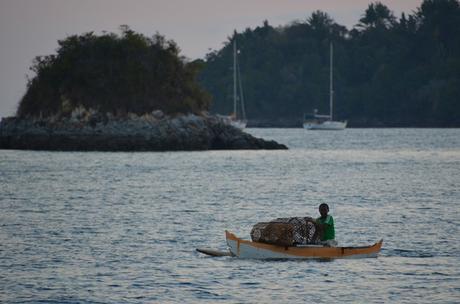
What we haven’t really had enough exposure to yet is everyday Malagasy food. Our stomping grounds in Nosy Be swing between the extremes of tourist dining and the simplest of hawker stalls: it’s the nature of the place. But tomorrow we begin our southbound path to Mahajanga. It’s a city on the west coast where we’ll check out of the country, a substantial community where I think we’ll find more to taste.
This post is syndicated on Sailfeed: clicking through tossed a tip our way. Thanks!

